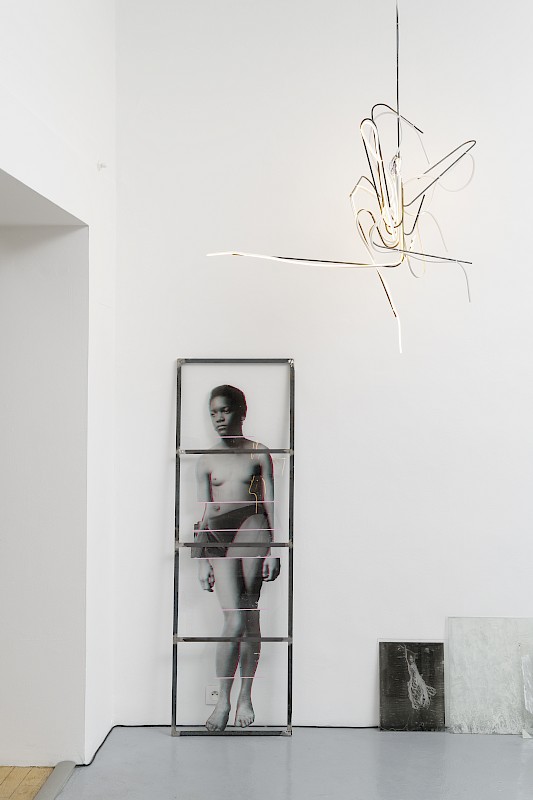
Personal, archives:
an exercise on emotional archaeologies
Invited to work with the collection of the photographer Marc Vaux (a collection of 127,000 photographs, featuring more than 5,000 listed artists and 11,000 boxes of glass plate negatives) Euridice Zaituna Kala has herself become the archive. Euridice has enthusiastically taken on this new role by searching for familiar figures from her memories and personal set of references: Josephine Baker, James Baldwin, her father Getúlio Mario Kala...
Kala’s glasswork allows her to develop a quasi-physical connection with Vaux’s archive, by reusing the material the photographer used to create the images in his collection.
By becoming the archive, Euridice gathers, sorts and interprets information according to its affective value rather than its historical relevance. Becoming the archive means reclaiming power by writing history free of institutional norms.
The artist was drawn to familiar bodies which resembled her own. Euridice reflected on these bodies’ presence in these photographs and their absence from the archives from which monolithic narratives of modern art have been constructed. Rather than reproducing these photographs in her exhibition, the artist instead chose to use narration to draw attention to the bodies frozen and framed in these images – trapped by the projections and fantasies of others.
Kala also interested in absent images: those that have gone missing, those never taken by Marc Vaux, those that have never been located. Who misses these missing images? How did they go missing? Do they exist somewhere else other than in the Vaux photographs? Euridice demonstrates that, like any archive, the Vaux collection is defined by its creator’s subjectivity and material constraints.